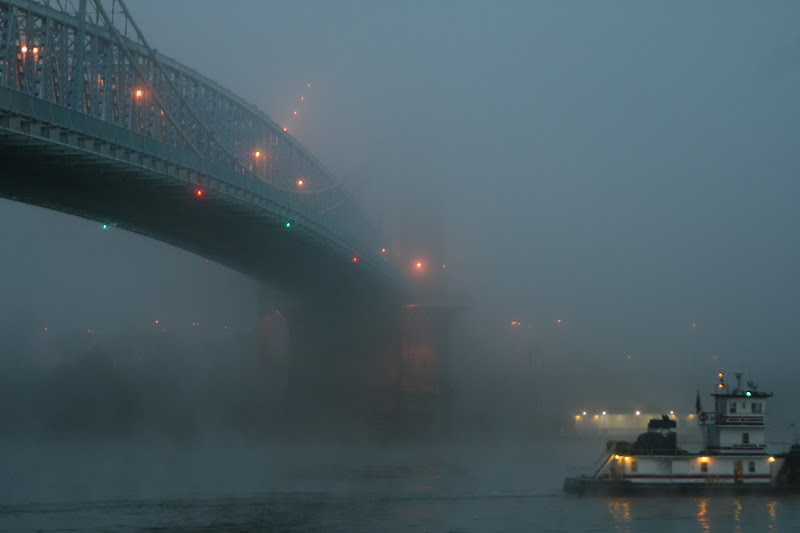My "UFO" photos of a scintillating star
The UFO sighting explanations like "swamp gas from a weather balloon was trapped in a thermal pocket and reflected the light from Venus" always seemed insufficient to me. That's not to say I believe in flying saucers.
I was living in Phoenix during the Phoenix Lights event in the 90's, and half of my friends were shocked by what they saw. I, unfortunately, was in the law library all night. I have my own theories about military experiments in transporting enormous payloads using monstrously huge dirigibles... but that's a story I hope to publish in another format soon.
I even dated the grand-daughter of a former full-bird Air Force Colonel stationed at Roswell in the 1950's, and point-blank asked him about UFOs. Wouldn't you? He denied any substance to the Roswell crash stories, of course. He did tell me all about his experience mapping magnetic polar drift for SAC in the 1940s, that I thought sounded nutty at the time, and only since have found out is an accepted, proven phenomenon.
A few times this fall I saw something that for a moment had my hopes up... a pinpoint of light flashing through cycles of brilliant color. This was far more vivid than any twinkling star I'd ever noticed, and I thought it had to be a medical helicopter in the distance. When it was still visible hours later I finally dragged a telescope up to a rooftop, and tried to see what it was.
I was looking at the star Fomalhaut, scintillating in that late September night. I'm still amazed at the beautiful color palettes it formed, as seen in a few photos below. They are 1/20th of a second exposures, within a few seconds of each other, taken with a Canon EOS XTi t-mounted on a short-tube 100mm aperture Orion refractor, enlarged quite a bit in Gimp, but without much adjustment of the color or brightness.
Fomalhaut, coincidentally, is the first star system in which astronomers have imaged an extra-solar planet in the visible spectrum. The appearance of structure in some of the photos is probably an artifact of dust on the lens, imperfect focus, etc.
Here's an unaltered original of the 4th shot above, to put in perspective what I mean by imperfect focus. I just eyeball it, but I do use a Hartman mask as an aid, so it was sharp to the limits of my gear.
I was living in Phoenix during the Phoenix Lights event in the 90's, and half of my friends were shocked by what they saw. I, unfortunately, was in the law library all night. I have my own theories about military experiments in transporting enormous payloads using monstrously huge dirigibles... but that's a story I hope to publish in another format soon.
I even dated the grand-daughter of a former full-bird Air Force Colonel stationed at Roswell in the 1950's, and point-blank asked him about UFOs. Wouldn't you? He denied any substance to the Roswell crash stories, of course. He did tell me all about his experience mapping magnetic polar drift for SAC in the 1940s, that I thought sounded nutty at the time, and only since have found out is an accepted, proven phenomenon.
A few times this fall I saw something that for a moment had my hopes up... a pinpoint of light flashing through cycles of brilliant color. This was far more vivid than any twinkling star I'd ever noticed, and I thought it had to be a medical helicopter in the distance. When it was still visible hours later I finally dragged a telescope up to a rooftop, and tried to see what it was.
I was looking at the star Fomalhaut, scintillating in that late September night. I'm still amazed at the beautiful color palettes it formed, as seen in a few photos below. They are 1/20th of a second exposures, within a few seconds of each other, taken with a Canon EOS XTi t-mounted on a short-tube 100mm aperture Orion refractor, enlarged quite a bit in Gimp, but without much adjustment of the color or brightness.
Fomalhaut, coincidentally, is the first star system in which astronomers have imaged an extra-solar planet in the visible spectrum. The appearance of structure in some of the photos is probably an artifact of dust on the lens, imperfect focus, etc.
Here's an unaltered original of the 4th shot above, to put in perspective what I mean by imperfect focus. I just eyeball it, but I do use a Hartman mask as an aid, so it was sharp to the limits of my gear.









Comments
It's such a treasure, historically, and the staff there are doing such great outreach. I really do need to get involved with the club. I could learn more in one evening with them than I've taught myself in ten years of working with my little scopes and cameras.
Did you luck out and get a clear night?